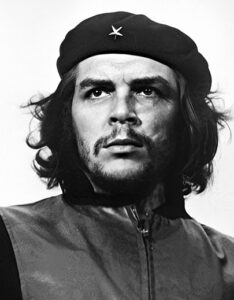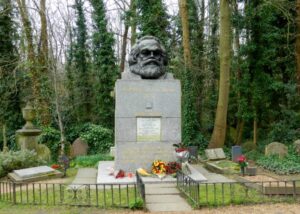Instruções:
Essas aulas de inglês são para alunos intermediários e avançados de inglês como segunda língua. Eles incluem “Ler”, “Ouvir” e “Escrever”. Basta seguir a lição respondendo às perguntas à medida que as encontra.
 Todas as vagas em negrito devem ser traduzidas para seu próprio idioma para ajudar na compreensão do novo vocabulário.
Todas as vagas em negrito devem ser traduzidas para seu próprio idioma para ajudar na compreensão do novo vocabulário.
Please LIKE & SUBSCRIBE my Youtube channel https://www.youtube.com/c/SteveBradeley/videos
~~~~~~~~~~~~~~~~~~~
QUESTION: Did you know that Ernesto “CHE” Guevarra was a biker?
The Epic Motorcycle Trip That Turned Che Guevara Into a Revolutionary
A coming-of-age adventure through five South American countries set Che Guevara on the path to becoming a Marxist revolutionary. They did the trip on a British Norton 500cc motorcycle.
In English we have these expressions:
- When you travel by car it’s like watching a movie as you go along, when you travel by motorcycle you are in that movie.
- Travel broadens the mind.
- It’s not the destination that is important. It’s the journey.
VOCABULARY: hop on, antiquated
INTRODUCTION: 
Ernesto “Che” Guevara was an Argentine Marxist revolutionary, doctor, writer, guerrilla leader, diplomat, and military theorist and a motorcyclist. A major figure of the Cuban Revolution, his stylized visage has become a ubiquitous countercultural symbol of rebellion and global insignia in popular culture.
Surprisingly, he was also a biker and doctor and loved motorcycles and after he had completed his studies in 1951, he and his friend Alberto Granado who was a biochemist specialising in leprology set off on a South American motorcycle trip that would change his life and set his political opinions about the way he thought about personal and political issues. After the trip Ernesto wrote the book ‘Notas de viaje’ or ‘The Mortorcycle Diaries’ as it is known in English.
VOCABULARY: a major figure, ubiquitous, theorist, visage, global insignia, rebellion
At the bottom of this English lesson you will find the movie in full. I recommend that you watch it and learn things that you didn’t know about Ernesto “CHE” Guevarra
MOTORCYCLE DIARIES: Watch the short video and then answer the questions below.
QUESTIONS:
- “There on a road to forget who they were and to discover who they are.” What does this mean?
- “Let the world change you and then you can change the world.” What does this mean?
THE CHE MUSEUM IN ARGENTINA
CHE adresses the United Nations in 1964
SECTION TWO:
THEIR TRIP:
Before Che Guevara became a Marxist guerilla commander, before he became a revolutionary icon emblazoned on T-shirts, before he was even known as “Che,” there was a buddy, a bike and an epic road trip that would change the course of his life and world history.
In December 1951, 23-year-old Argentine medical student Ernesto Rafael Guevara de la Serna

hopped on the back of his friend Alberto Granado’s antiquated Norton 500cc motorcycle and sped out of Cordoba, Argentina. “All we could see was the dust on the road ahead and ourselves on the bike, devouring kilometers in our flight northward,” Guevara wrote.
In spite of a six-year age difference, Guevara and Granado, a 29-year-old biochemist, had been friends for nearly a decade. The duo shared an intellectual curiosity and a hunger for adventure as they embarked on an odyssey up the spine of South America.
VOCABULARY:The Making of a Revolutionary, emplazened, buddy, epic, sped, duo
SECTION THREE:
Guevara’s social awareness had already begun to emerge during his prior travels in Argentina and abroad, says Paulo Drinot, a professor of Latin American history at University College London and editor of Che’s Travels: The Making of a Revolutionary in 1950s Latin America. “Che grew up in an upper middle-class family that had hit on hard times, but it was an intellectual environment that was

clearly attentive to political processes,” he says. “His interest in medicine as a career and profession was in part an expression of his social consciousness, which developed at an early age.”
After leaving Cordoba, the two friends visited the Argentine capital of Buenos Aires and the seaside city of Miramar before crossing the barren pampas and ascending into the Andes. Plagued by his chronic asthma, Guevara had a rough start to the trip as he contracted the flu and nursed a broken heart after receiving a break-up letter (Dear John) from his girlfriend.
VOCABULARY: upper middle class, hit on hard times, social consciousness, the seaside, intellectual environment, barren pampas, ascending, plagued, chronic astma, a rough start, contracted the flu, to nurse a broken heart, a break-up letter, dear John letter
SECTION FOUR:

Granado’s motorcycle, nicknamed La Poderosa II (“the mighty one”), suffered from its own ailments and failed to live up to its moniker before finally breaking down for good in Chile. The road trippers were now “bums without wheels,” as Guevara wrote. They forged northward, however, through deserts and rainforests by hitching rides, walking, riding horses and even stowing away on a ship. The pair slept in garages, barns and police stations as well as under the stars.
The friends visited iconic locations such as Lake Titicaca and the ruins of Machu Picchu, which Guevara called “the pure expression of the most powerful indigenous race in the Americas.” They also visited decidedly less touristy locations like the great copper mine in the Chilean town of Chuquicamata that was operated by an American multinational company. There, Guevara witnessed the exploitation of the mine workers.
VOCABULARY: a nickname, ailments, moniker, bums without wheels, to forge northward, hitching a ride, stowing away, a barn, sleeping under the stars, iconic location, ruins, touristy, a copper mine,
SECTION FIVE
“The only thing that matters is the enthusiasm with which the workers set to ruining their health in search of a few meager crumbs that barely provide their subsistence,” he wrote. “The biggest effort Chile should make is to shake its uncomfortable Yankee friend from its back, a task that for the moment at least is Herculean.” Che Guevara.
VOCABULARY: enthusiasm, ruining their health, meager crumbs, barely, subsistence, a Yankee, a task, Herculean
In Peru, the two Argentines saw the wretched poverty endured by indigenous people treated as second-class citizens. “These people who watch us walk through the streets of the town are a defeated race,” Guevara wrote. “Their stares are tame, almost fearful, and completely indifferent to the outside world. Some give the impression they go on living only because it’s a habit they cannot shake.”
VOCABUALARY: wretched, poverty, second class citizen, a defeated race, stares, tame, indifferent, cannot shake
After sailing on the Amazon River, Granado and Guevara spent two weeks at a leper colony in eastern Peru where the humane treatment of the 600 patients affirmed Granado’s desire to continue his work helping those with leprosy. “The psychological lift it gives to these poor people—treating them as normal human beings instead of animals, as they are used to is incalculable,” Guevara wrote.
VOCABULARY: sailing, leper colony, humane treatment, affirmed, psychological lift, incalculable
SECTION SIX
The medical student’s travels made him more conscious of a common South American civilization and awoke in him a pan-American vision. “The division of America into unstable and illusionary nations is completely fictional, we constitute a single mestizo race, which from Mexico to the Magellan straits bears notable ethnographical similarities,” he said at a birthday party thrown in his honor at the leper colony. “And so, in an attempt to rid myself of the weight of small-minded provincialism, I propose a toast to Peru and to a United Latin America.”
VOCABULARY: conscious, awoke, unstable, illusionary, fictional, constitute, mestiza race, magellan straits,notable, ethnographical, thrown, in his holor, to rid myself, small-minded
Continuing their travels, the pair voyaged down the Amazon on a wooden raft, christened Mambo-Tango, until they surrendered to the swift currents and swarms of mosquitoes and took refuge in Leticia, Colombia, for nine days where they trained a local soccer team, with the future guerilla leader playing goalie.
Following a flight to Bogota on what Guevara called “a cocktail-shaker of an airplane,” they travelled by bus and truck to Caracas, Venezuela, where the pair separated. Granado began work at a local leprosy clinic while his friend flew to Miami and spent three weeks in the United States before returning home to Argentina after eight months away.
VOCABULARY: a wooden raft, christened, swift currents, swarms of, took refuge, goalie
SECTION SEVEN
Guevara Joins Fidel Castro in the Cuban Revolution
The 8,000-mile trip from the Andes to the Amazon made an impact on the young medical student by exposing him to social injustice, economic inequality, capitalist exploitation and political repression. “I am not the person I once was,” he wrote upon his return. “All this wandering around ‘Our America with a Capital A’ has changed me more than I thought.”
VOCABULARY: social injustice, inequality, repression
“Che’s politicization was in large part a product of his travels, first in 1951-52 and then, more so, a second trip that took him to Guatemala and later Mexico,” Drinot says. “In part, this owed to his experience of poverty and inequality in Latin America, and the ways he understood the causes of both poverty and inequality.
At the same time, he met a number of left-wing political figures and also non-left-wing political figures, and he generally was more impressed by the former than the latter. Finally, he came to view the United States as major factor in the problems that Latin America faced, and this led him to align with left-wing Marxist views.”
VOCABULARY: politicization, owed to, inequality
SECTION EIGHT
After graduating from medical school, Guevara met Fidel Castro in Mexico in 1954 and joined the Cuban Revolution. He never forgot his friendship with Granado, however. At the guerilla leader’s invitation, Granado moved to Cuba in 1961 and co-founded a medical school. Guevara’s extended journal of the duo’s cross-continent trip was published in the early 1990s and became the basis of the 2004 film “The Motorcycle Diaries.”
SECTION NINE
Che Guevara believed in the principles of Marxest political theory. In a nutshell, Marxism is a social, political, and economic theory originated by Karl Marx that focuses on the struggle between capitalists and the working classes. His best-known titles are the 1848 pamphlet The Communist Manifesto and the four-volume Das Kapital. DOWNLOAD pdf HERE: >>>>> Karl Marx The Communitst Manifesto

The Tomb of Karl Marx stands in the Eastern cemetery of Highgate Cemetery, North London, England. It commemorates the burial sites of Marx, of his wife, Jenny von Westphalen, and other members of his family. You can watch the complete movie below.
VOCABULARY: cross-continent, co-founded
THE COMPLETE MOVIE: (I highly recommend this movie. It’s a classic)
WRITING EXERCISE:
Write 150 words about your reconceptions about Che Guevara’s life before you read this lesson.
GRAMMAR:
Use one example of the past progressive in your text. Below you will find a lesson about the past progressive.

